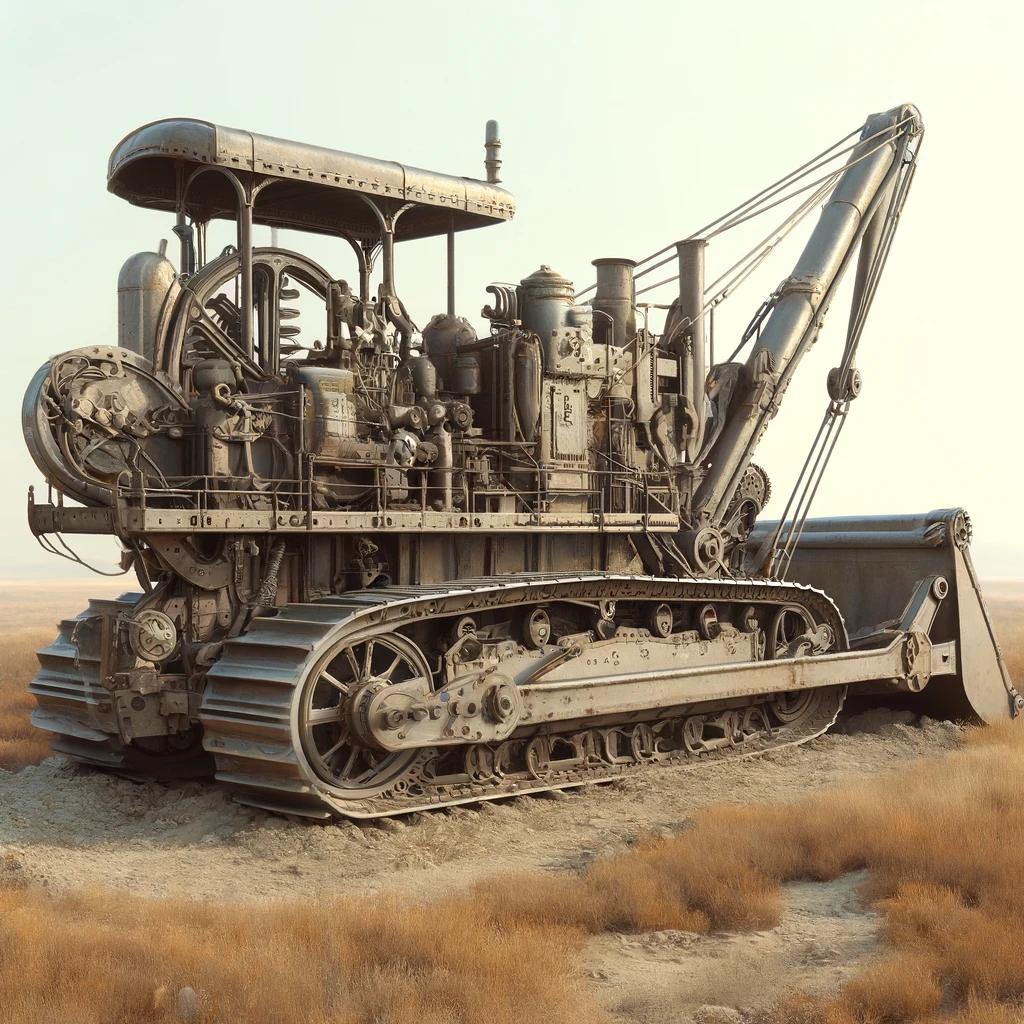Introduction
The excavator has evolved from the steam-powered behemoths of the Industrial Revolution to today’s sleek, eco-friendly hybrid models. In this blog, we trace the transformative journey of excavators, focusing on their technological advancements and the impact on industry practices.
The Humble Beginnings: Steam Shovels
Originating in the late 19th century, steam shovels played a pivotal role in major engineering feats such as the construction of the Panama Canal. These early excavators, powered by steam, showcased their raw power but were cumbersome and inefficient compared to modern standards. Their reliance on substantial water and fuel supplies limited their operational scope.
Transition to Diesel Power
The advent of diesel-powered excavators significantly improved excavator mobility and efficiency. After World War II, these machines became staples in urban development and construction projects, offering enhanced speed and extended operational periods without the frequent refueling stops necessary for steam shovels. Diesel excavators took a leap forward in reliability and operational range, setting the stage for further innovations.
The Hydraulic Revolution
Hydraulic systems revolutionized excavator functionality in the mid-20th century, replacing cable-operated mechanisms with enhanced precision and versatility. Hydraulic excavators became indispensable in various sectors, including mining and urban construction, transforming the landscape of industrial machinery with their ability to perform intricate digging and lifting tasks.
The Rise of Electronics
With the late 20th century integration of electronics, excavators took another leap in capabilities. Modern excavators, equipped with advanced electronics, enhance machine performance through real-time monitoring and automated systems. Features like GPS-guided excavation paths and digital performance tracking allow for unprecedented accuracy and efficiency.
Today’s Hybrids: Towards a Greener Future
Hybrid excavators represent the pinnacle of current excavator technology, combining traditional diesel engines with electric motors. These machines prioritize environmental sustainability without sacrificing power. Models like the Komatsu HB215LC-1 and the Caterpillar 336E H showcase significant advancements in fuel efficiency and emission reduction. Hybrid technology not only meets stringent environmental standards but also reduces operational costs.
Comparative Advantages of Hybrid Excavators
Hybrid excavators deliver numerous operational benefits:
- Fuel Efficiency: They significantly reduce fuel consumption, curbing operational costs and environmental impact.
- Operational Efficiency: They enhance control and provide faster response times through electric motor integration.
- Reduced Emissions: They emit lower emissions, making them ideal for urban and environmentally sensitive projects.
- Noise Reduction: They operate quieter, thanks to electric motors, improving urban usability.
Market Impact and Future Prospects
Despite higher initial costs, the long-term benefits of hybrids, coupled with increasing environmental regulations, are making them a preferred choice for future-focused firms. As this technology continues to evolve, hybrid excavators are expected to become more prevalent, driving the construction industry towards sustainability.
Conclusion
Excavators have evolved significantly from their steam-powered origins to the high-tech hybrid systems of today. This evolution reflects ongoing improvements in efficiency, environmental responsibility, and adaptability to modern needs. As we look forward, the evolution of excavators will likely continue towards full electrification and automation, heralding even greater advancements in construction technology. If you are in the market, check out our wide variety of excavators for sale on our website for more information on Machines and bids.

